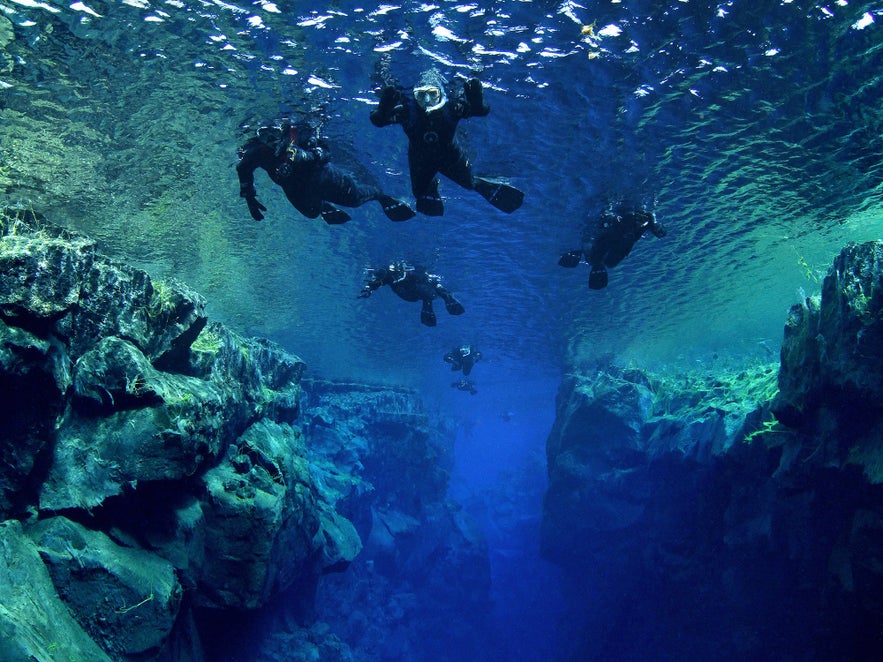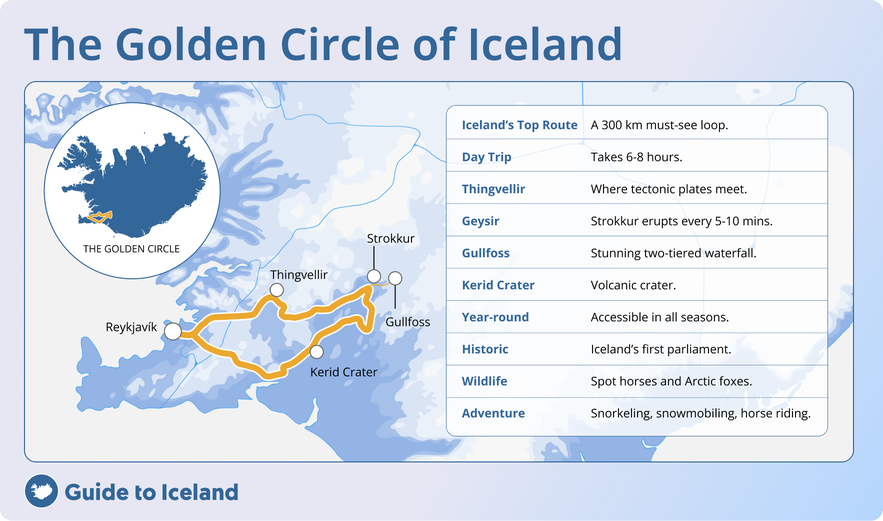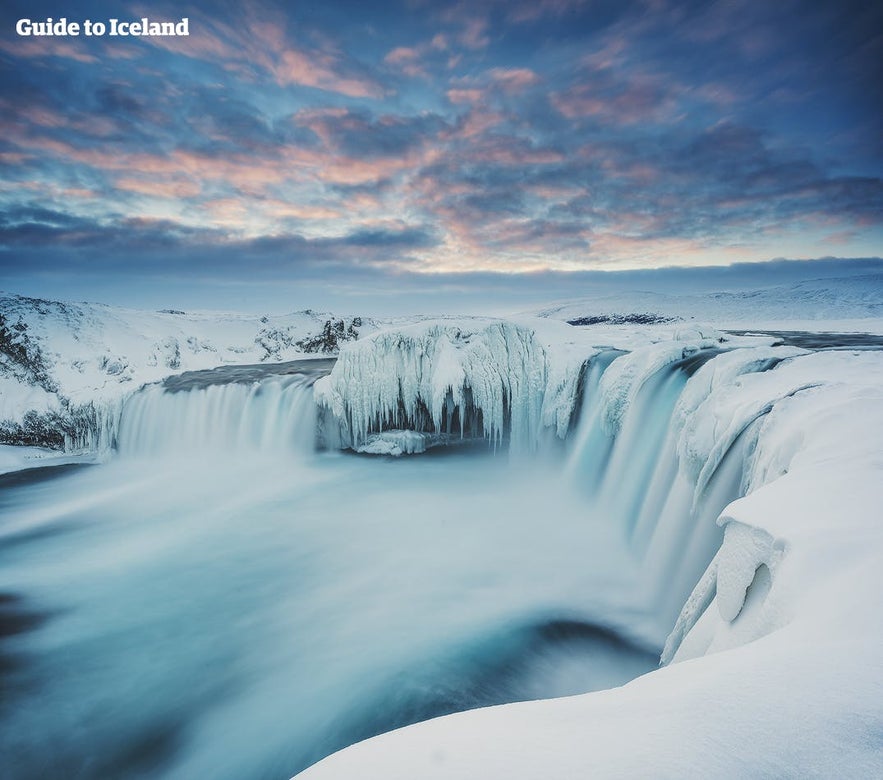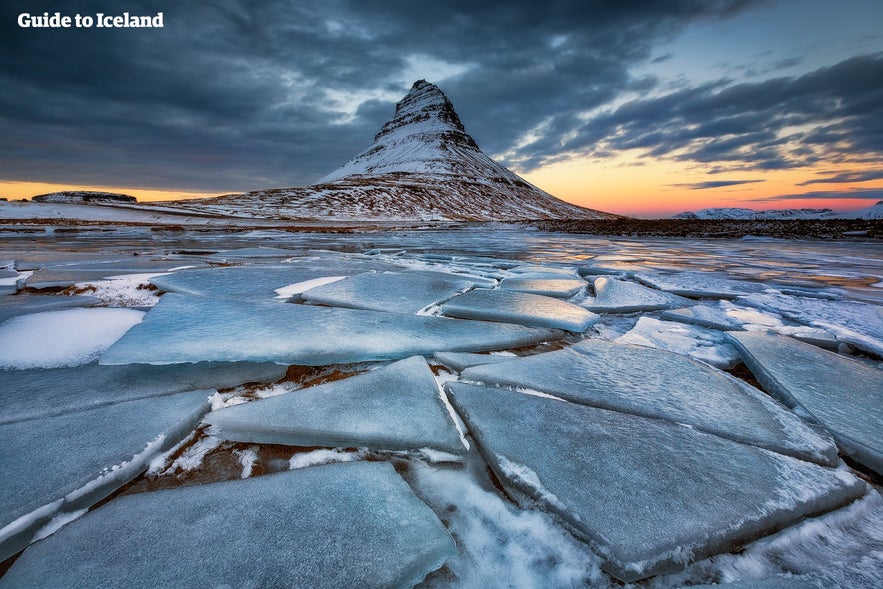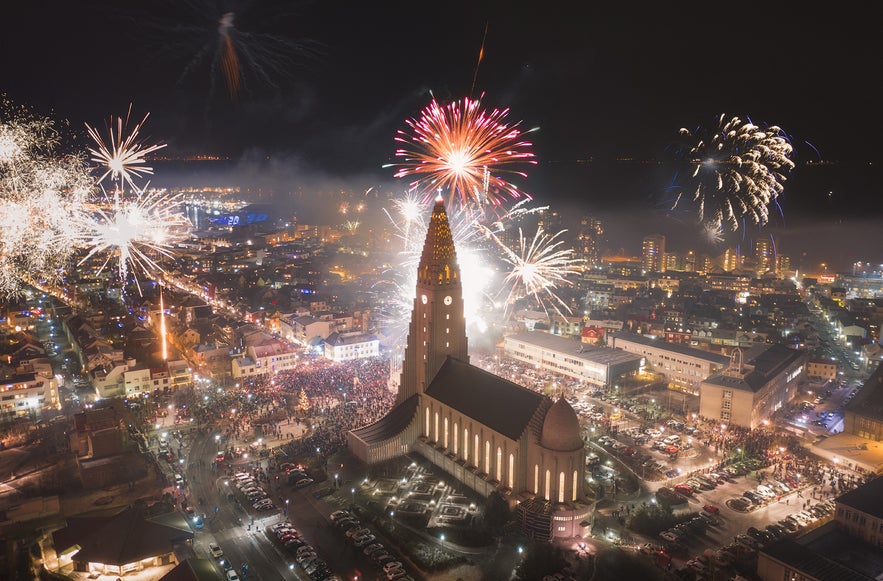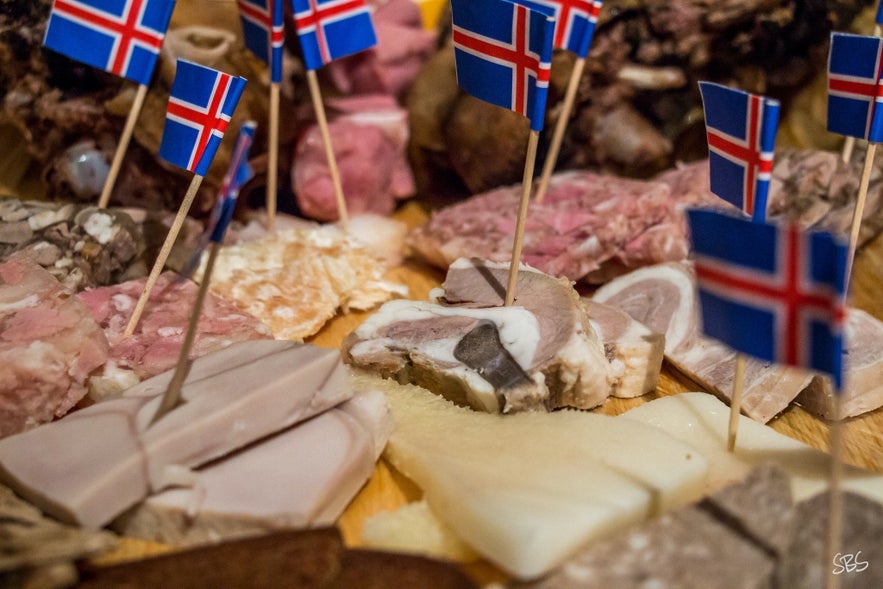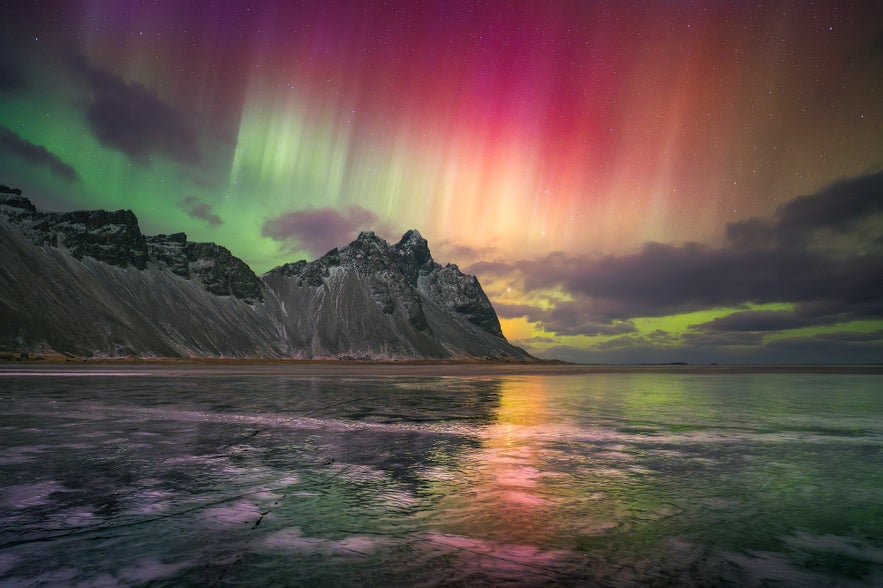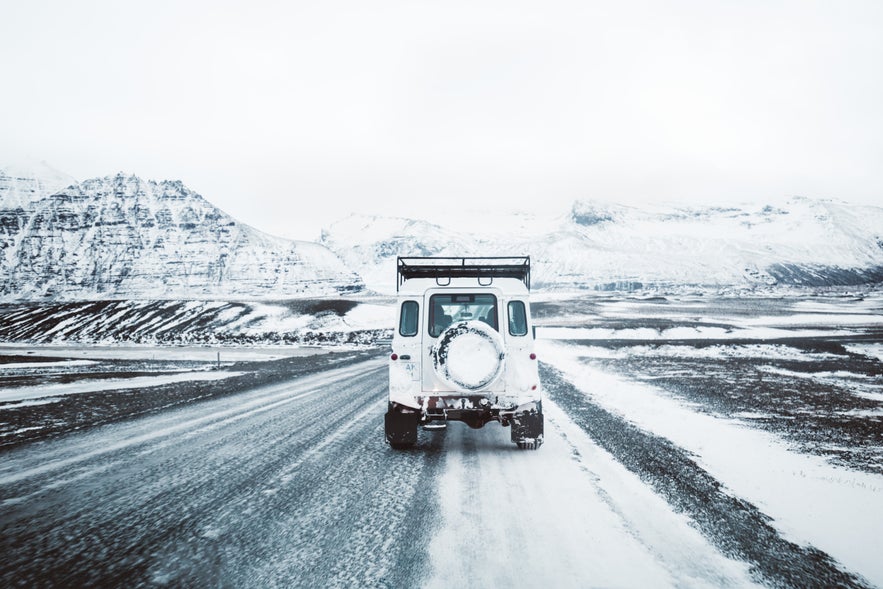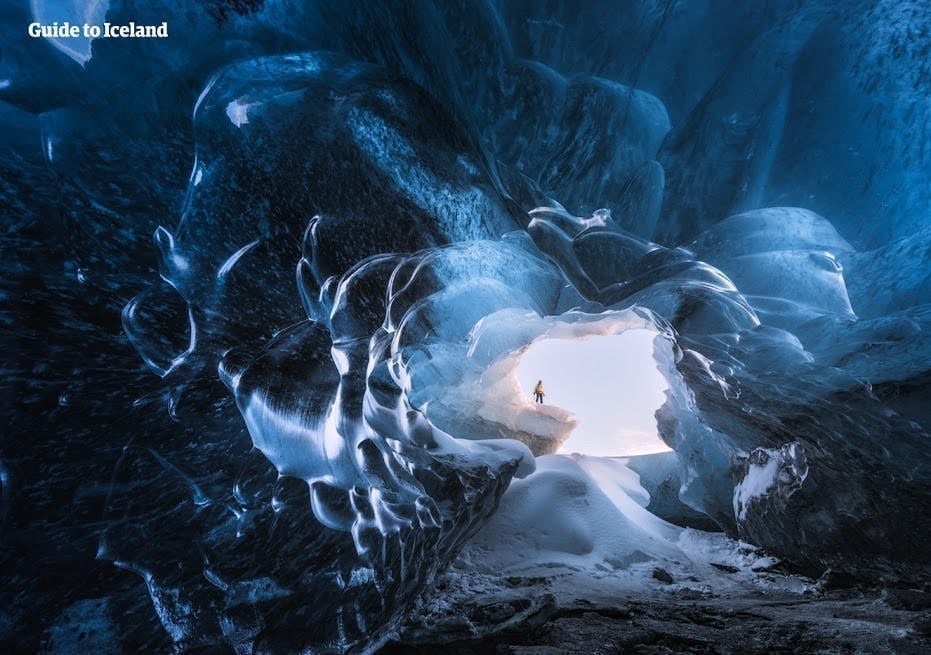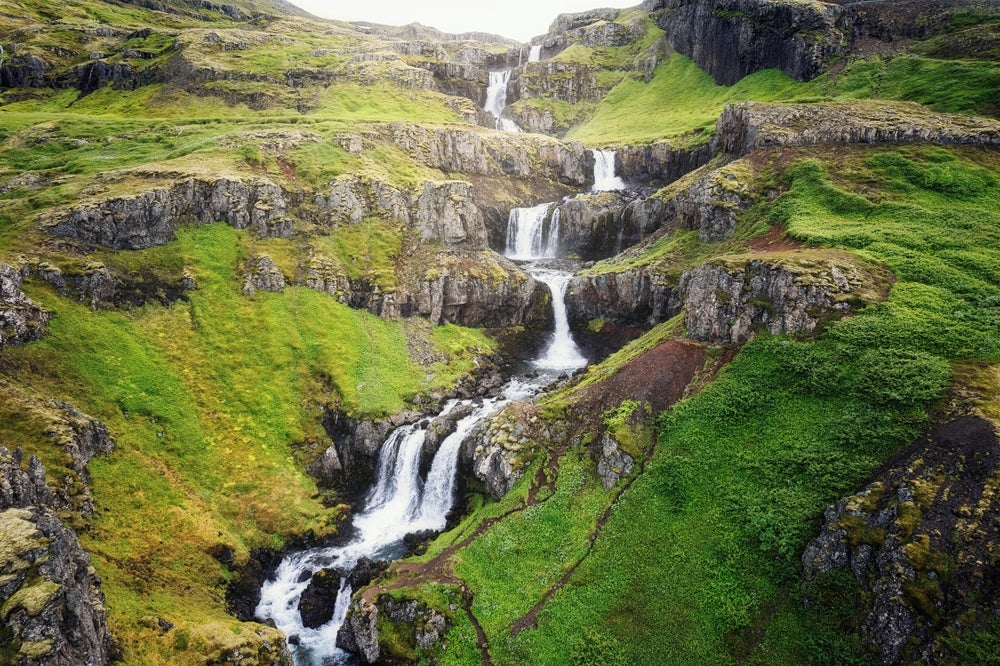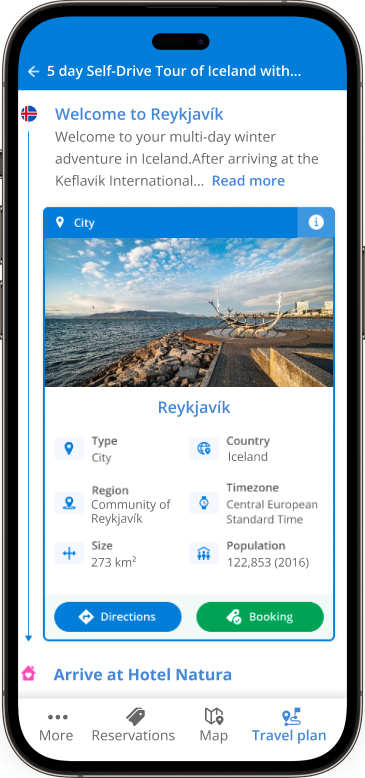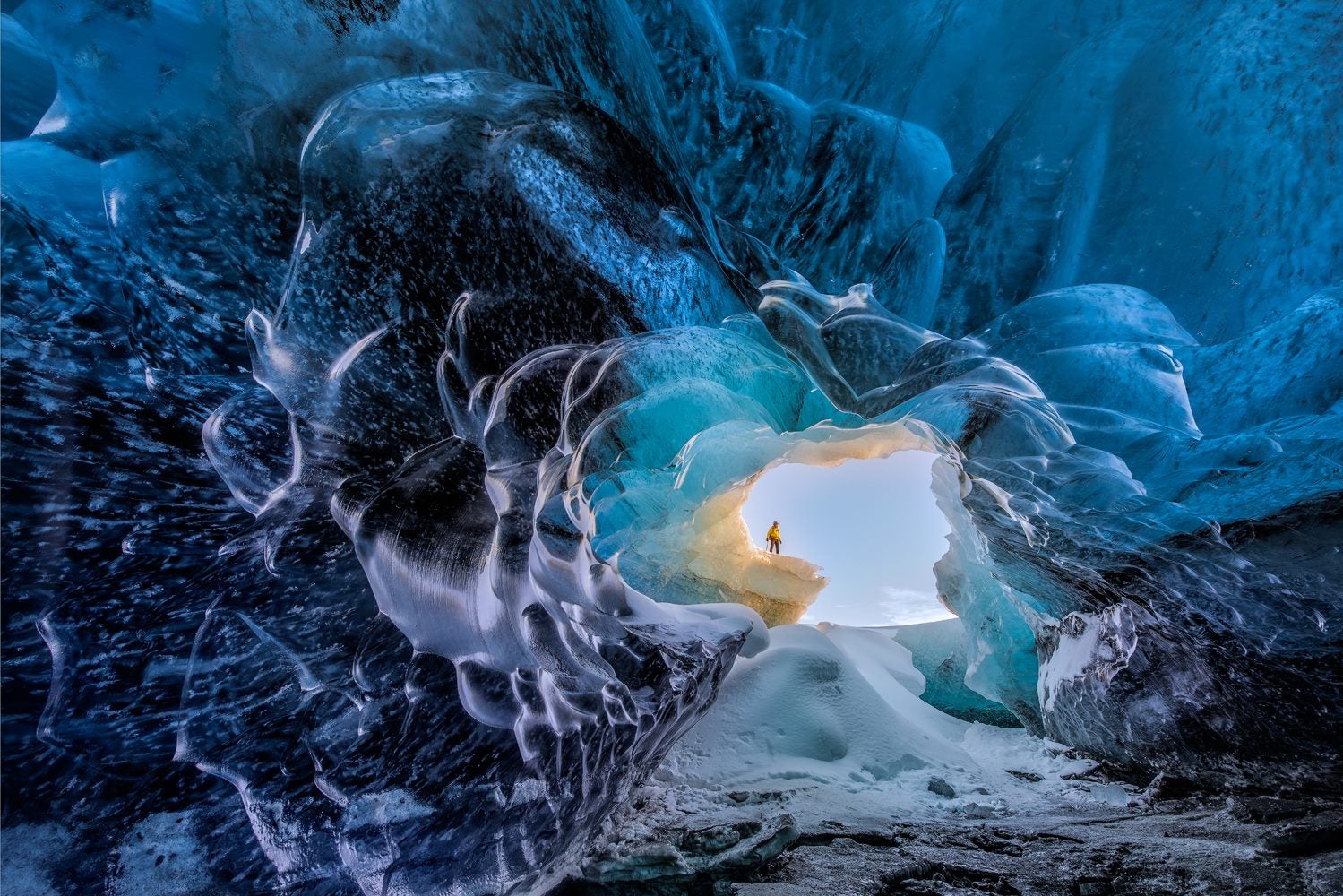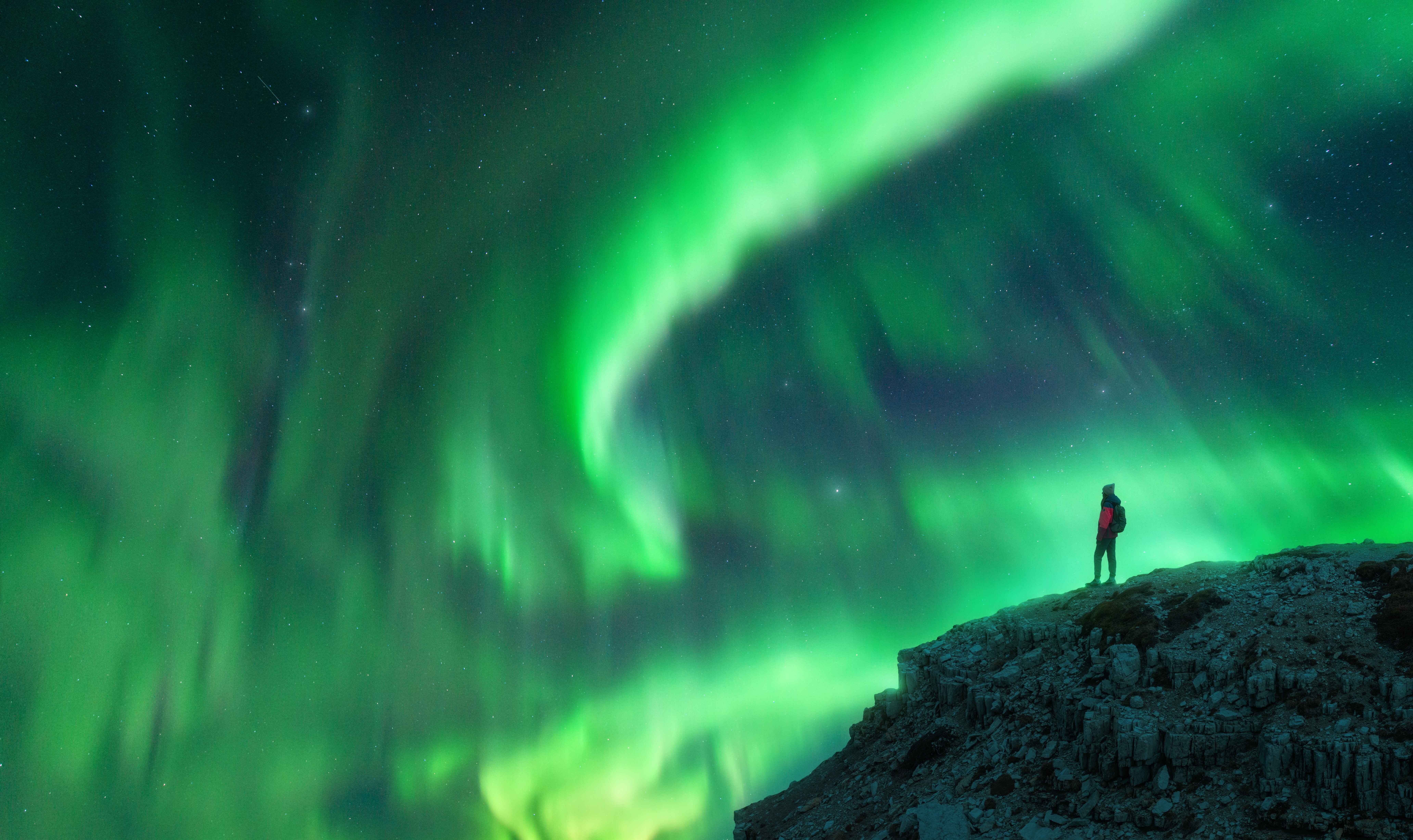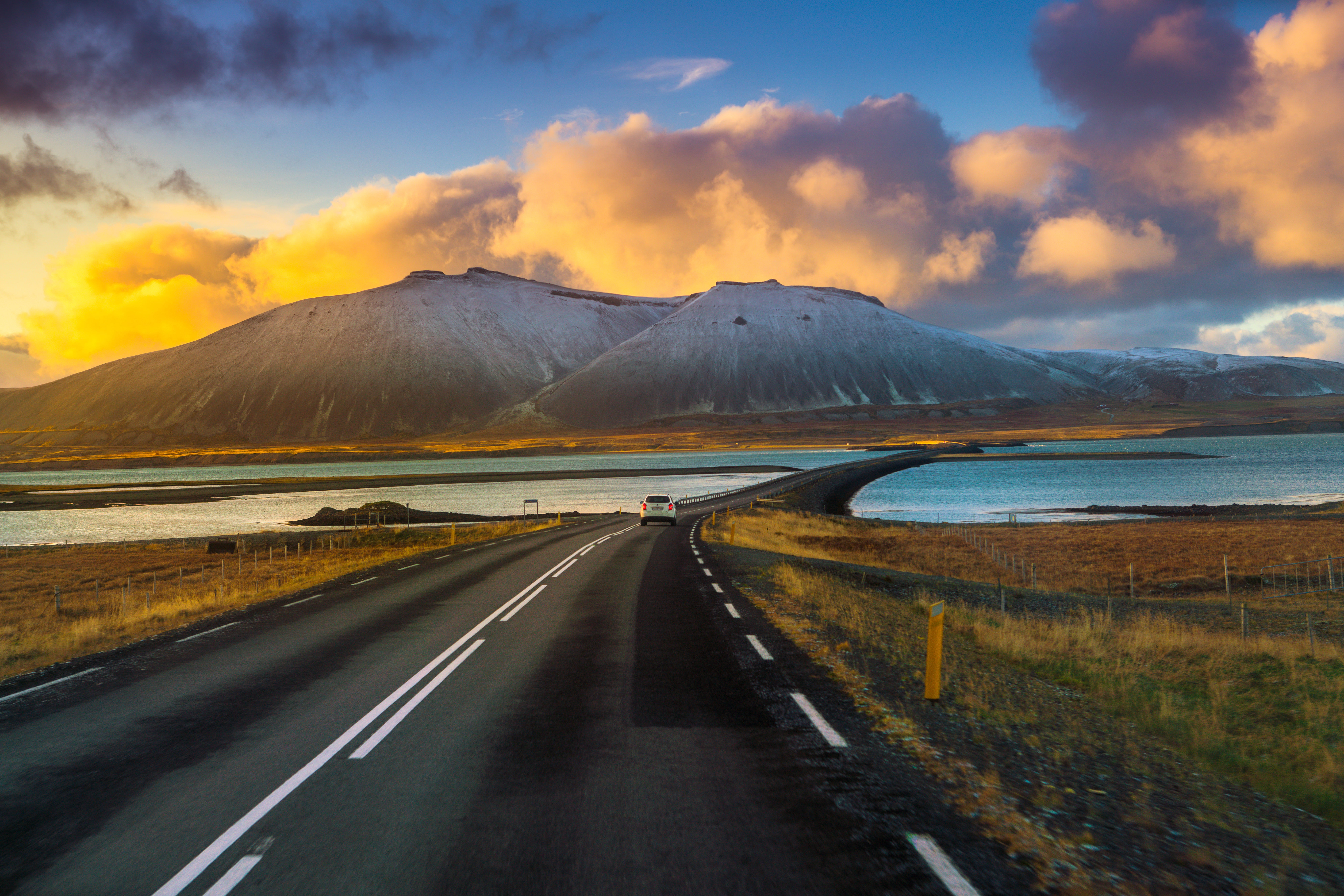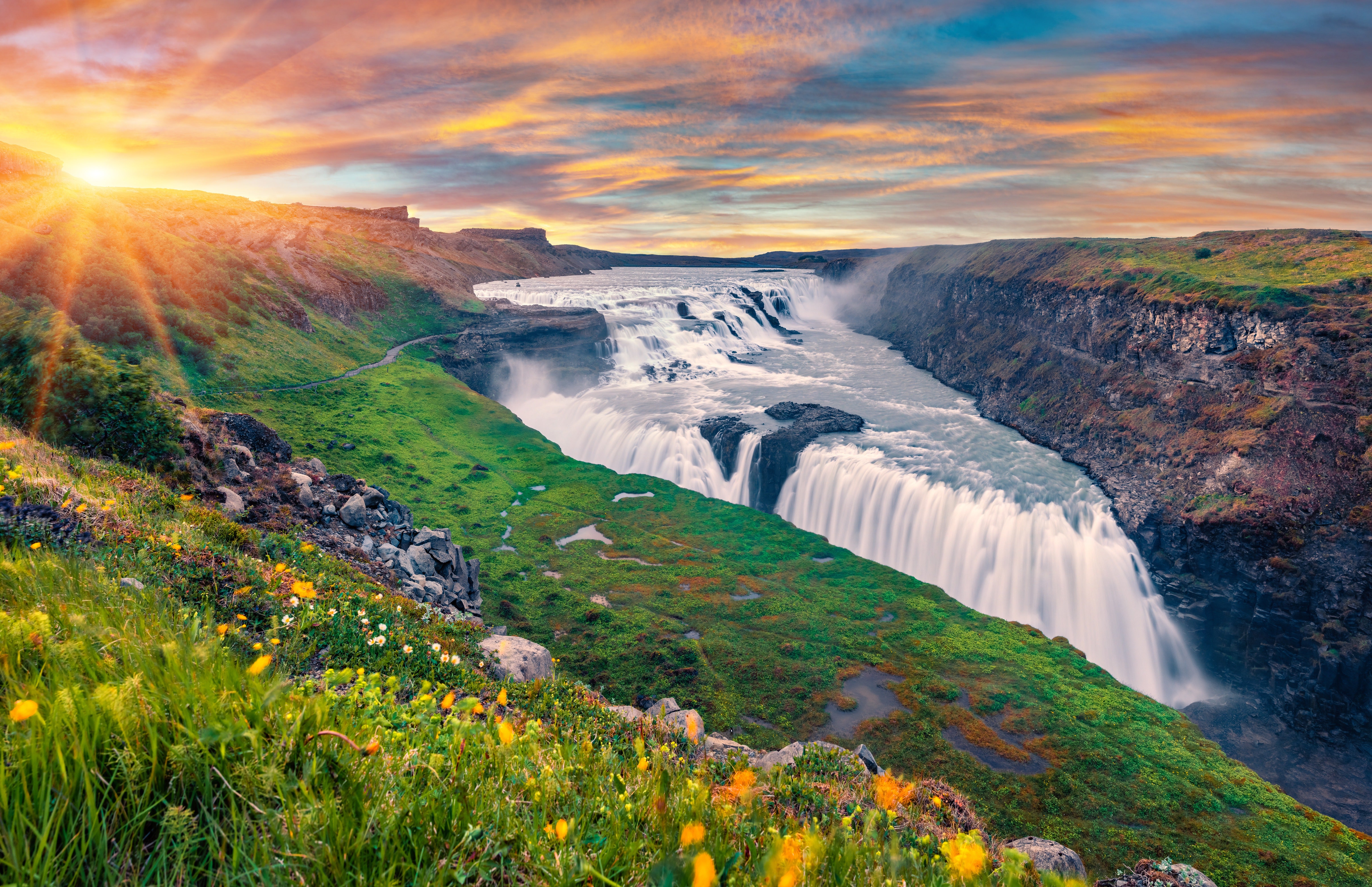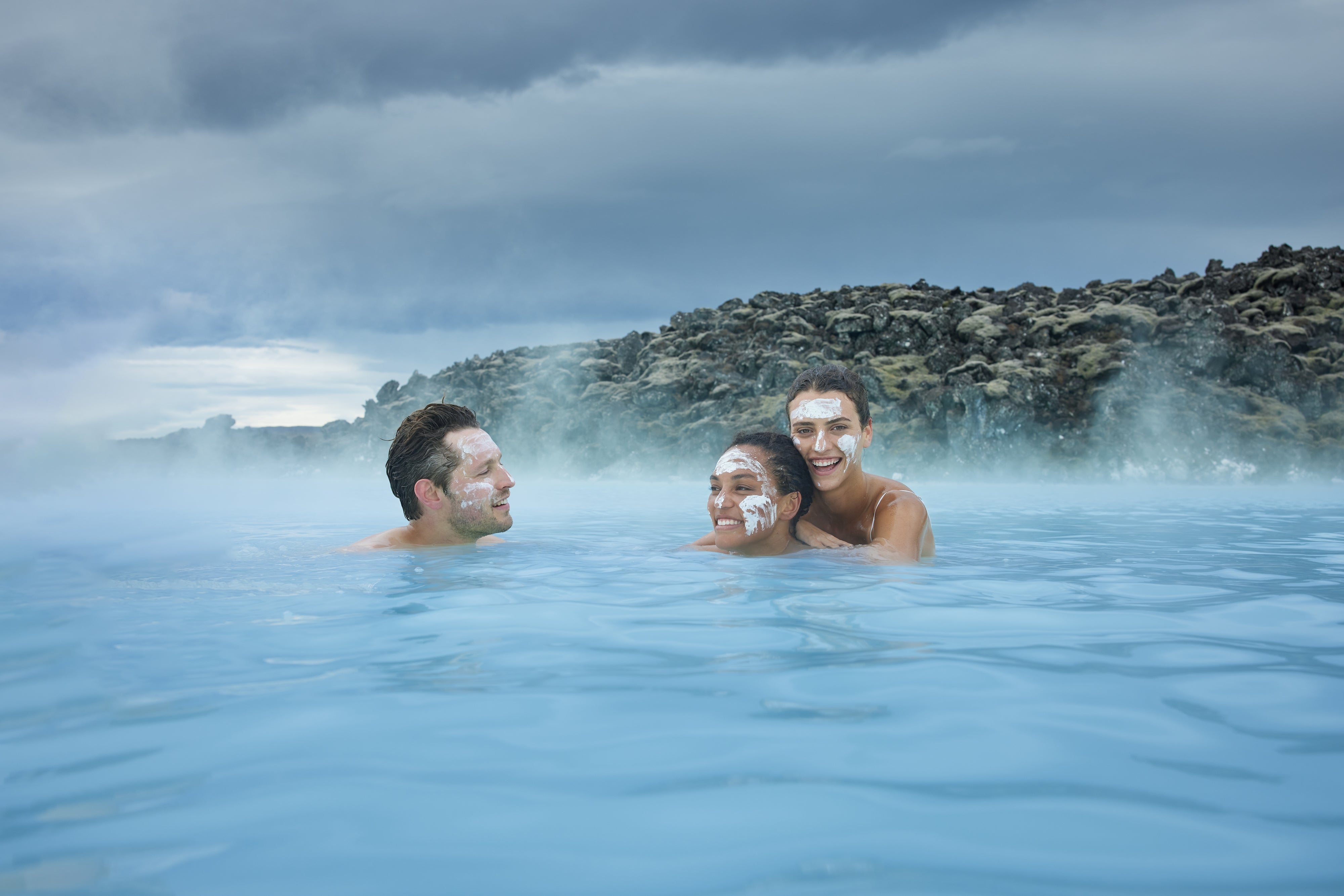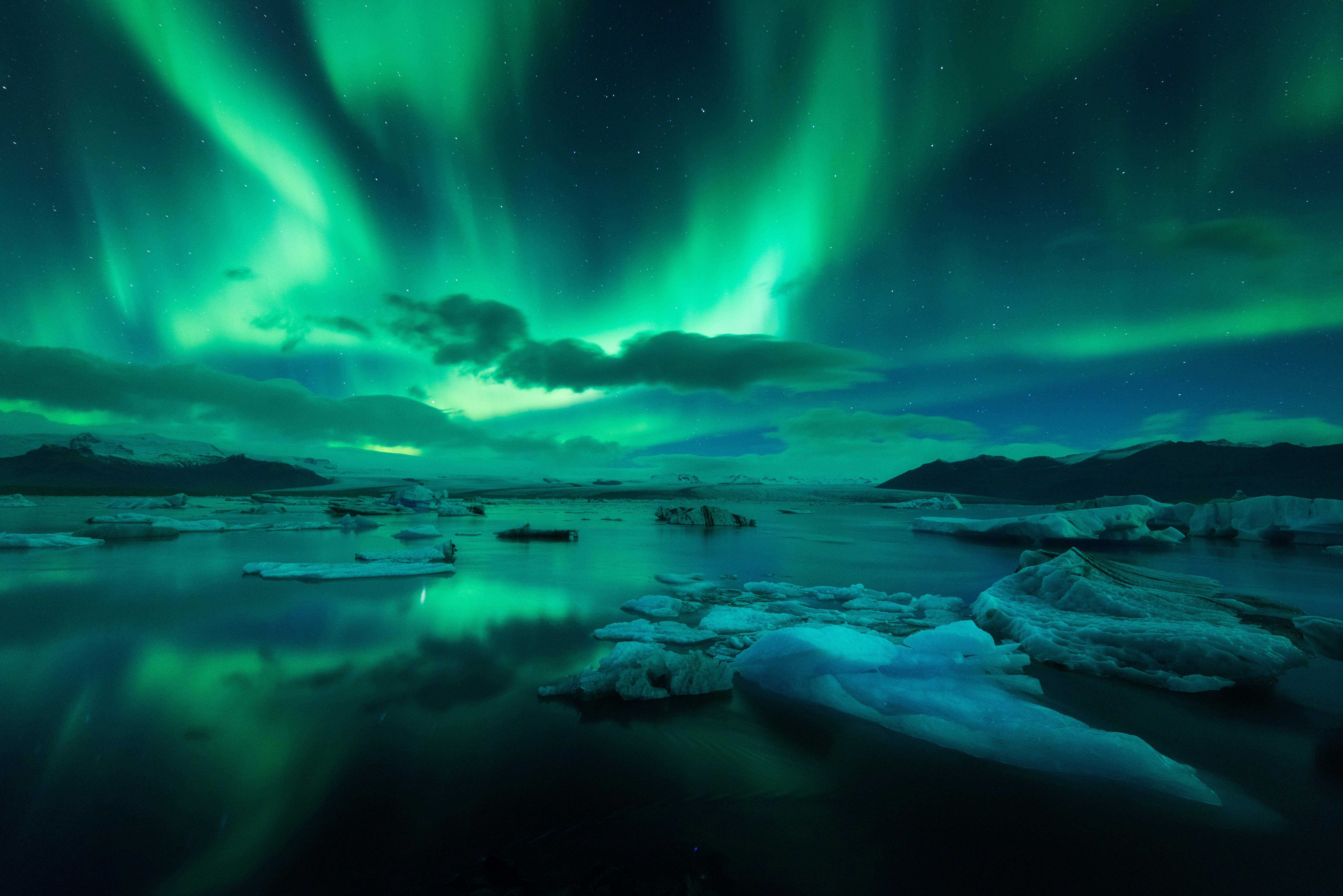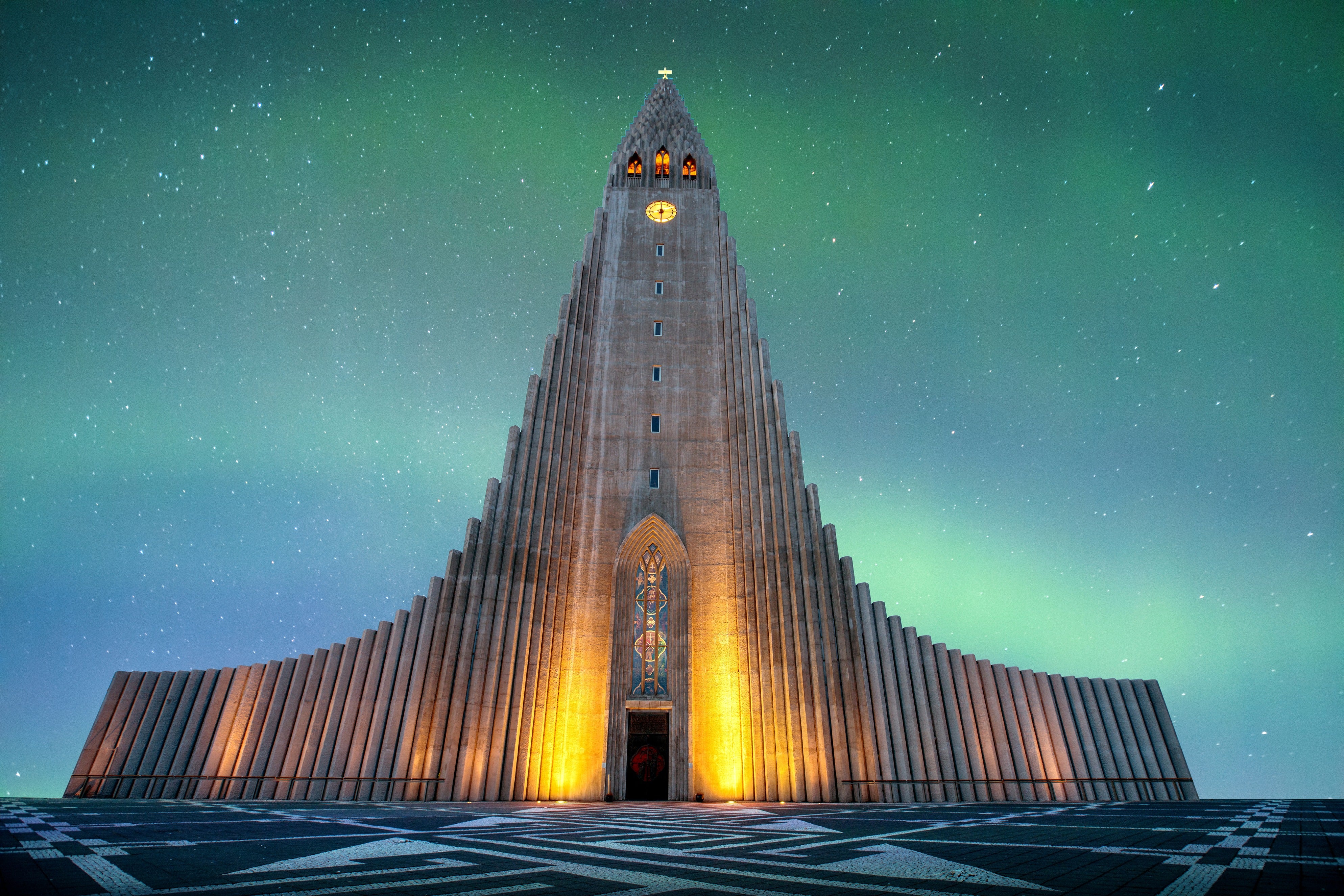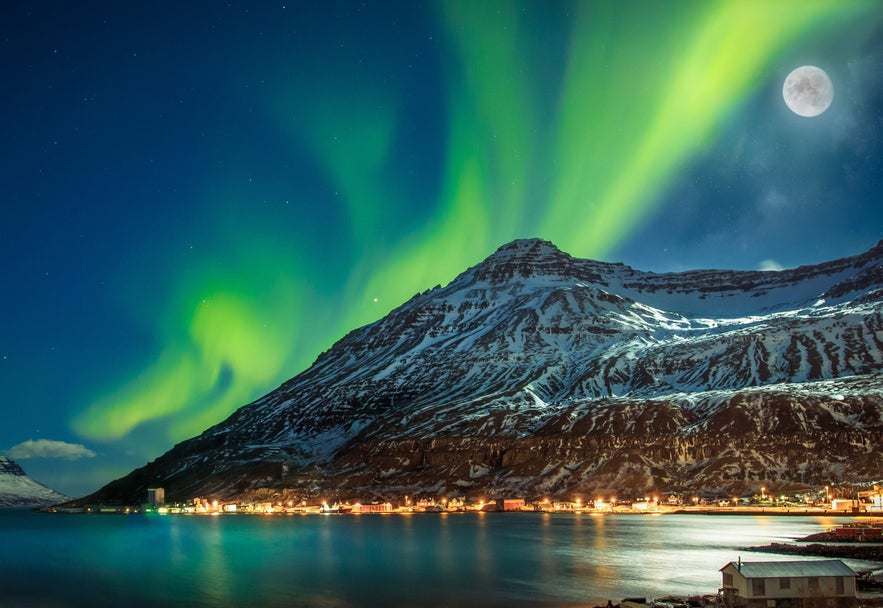
Iceland tours in January offer winter experiences that are hard to match. Snow covers the landscape and the stable cold creates ideal conditions for ice caving and glacier hiking. Long nights support the best northern lights experiences, and the solar maximum increases the chances of bright auroras throughout January 2026.
Why You Can Trust Our Content
Guide to Iceland is the most trusted travel platform in Iceland, helping millions of visitors each year. All our content is written and reviewed by local experts who are deeply familiar with Iceland. You can count on us for accurate, up-to-date, and trustworthy travel advice.
January is one of Iceland’s quietest months. After the December holidays, visitor numbers decrease. This makes it easier to secure tours, book accommodations, and enjoy popular sites in Reykjavik and along major sightseeing routes without heavy crowds. Prices also tend to be more favorable compared to peak-season months.
This guide covers January weather and temperatures in Iceland, top activities, festivals, and practical tips on winter clothing, budgeting, and more. It provides everything travelers should know for a safe and memorable visit to Iceland in January.
Key Takeaways: Is January a Good Time To Visit Iceland?
-
January is one of the best months to see the northern lights in Iceland due to long, dark nights and frequent aurora activity.
-
Popular winter activities in January include ice caving, glacier hiking, and snowmobiling.
-
Geothermal hot springs offer a relaxing contrast to the cold, with places like the Blue Lagoon and Sky Lagoon open year-round.
-
January is part of Iceland’s low tourist season, meaning fewer crowds and more budget-friendly prices.
-
Weather can be unpredictable, so travelers should dress in layers and check road and weather conditions regularly.
-
Cultural events such as the 13th of Christmas and Dark Music Days give visitors a glimpse into Icelandic winter traditions.
-
Popular regions like the Golden Circle remain accessible and look striking under snow and ice.
Top 8 Things To Do in Iceland in January
As the height of winter in Iceland, the weather in January is generally cold and snowy. It also gets dark in the late afternoon, making the days shorter. These conditions make this month one of the best times for the northern lights.
If you’re still wondering whether January is a good time to visit Iceland, don’t let the weather put you off. There are still plenty of things to do in Iceland in January!
Multiple tours are still running across the country, some of which are best in the depths of winter, such as going on ice cave tours and, of course, viewing the northern lights. As long as you make the most of the daytime hours, you won't find yourself short of exciting experiences.
8. Ride Icelandic Horses Through Snowy Landscapes

Horseback riding is possible throughout the year in Iceland and is very popular among locals and visitors. Not only will this experience allow you to see some beautiful winter landscapes, but it will also introduce you to the charming Icelandic horse.
The Icelandic horse breed has many unique traits. They are incredibly sure-footed, as it has traveled black sands, rivers, and lava fields for over 1000 years. Icelandic horses also have five gaits, while other horses have just three or four, the fifth gait being "tolt," which is a smooth and ground-covering four-beat gait.
Icelandic horses are beloved across the world because of their curiosity and intelligence relative to their mainland counterparts, as any Icelandic horse owner will tell you. Additionally, Icelandic horses grow a winter coat in January, making them look extra fluffy and adorable!
There is a wide selection of horseback riding tours to choose from, many of them departing from Reykjavik. They can also be combined with other excursions, like this Golden Circle and horse riding tour or this horse riding and whale-watching day tour.
Top Horseback Riding Tours
-
Top-Rated Horse Riding Tour with Optional Pickup from Reykjavik — Explore the volcanic landscape outside of Reykjavik from the back of an Icelandic horse.
-
Horse Riding Tour on the Black Sand Beach from Vik — Discover the one-of-a-kind beauty of the Black Sand Beach while on horseback.
-
Horse Riding Tour from Hveragerdi — Saddle up and experience the majesty of the Icelandic countryside in this beginner-friendly tour.
7. Experience Whale Watching in Iceland in January
 While January is not the peak season for whale watching in Iceland, you can still see certain species in Faxafloi Bay. Winter sightings can include orcas, harbor porpoises, and white-beaked dolphins, which stay in coastal waters year-round.
While January is not the peak season for whale watching in Iceland, you can still see certain species in Faxafloi Bay. Winter sightings can include orcas, harbor porpoises, and white-beaked dolphins, which stay in coastal waters year-round.
Whale watching tours from Reykjavik operate when conditions allow. Tours typically last 2–3 hours and depart from the Old Harbor, a short walk from central Reykjavik. For wildlife enthusiasts, it’s one of the quieter but rewarding things to do in Iceland in January.
Top Whale Watching Tours
-
The Whale Watching Tour from Reykjavik — After departing from the capital's Old Harbour, you'll have the chance to see Iceland's amazing marine wildlife.
-
The Original Husavik Whale Watching Tour — Leave the docks of Husavik, Iceland's whale-watching capital, and search Skjalfandi Bay for whales.
-
Whale Watching Tour with Transfer from Akureyri — Venture out from Iceland's capital of the North and experience the beauty of the wildlife and Eyjafjordur (Island fjord).
6. Join a Snowmobiling Tour in Iceland in January
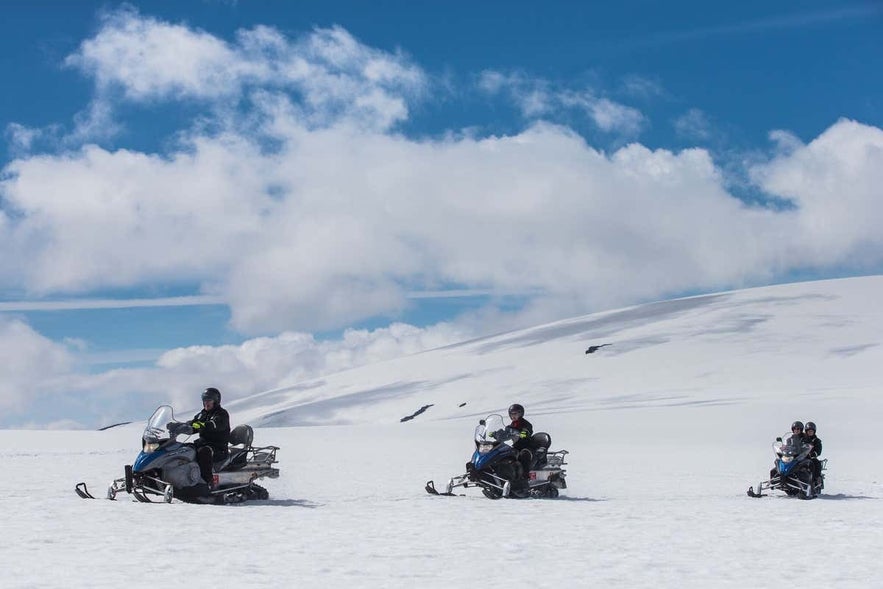
If you're not the hiking type, but would still like to explore Iceland's glaciers, there is a faster way to do it. A much faster way!
January is a great time of year to go snowmobiling and zoom across the fluffy, snowy plains of Iceland's glaciers. You can combine snowmobiling with a Golden Circle tour with a transfer from Reykjavik, or you can meet on location for this epic 3-hour snowmobiling tour on Vatnajokull Glacier.
With approximately 11% of the country’s surface covered by glaciers, you'll have multiple options to choose from when it comes to snowmobiling in Iceland. You are certain to find thrilling snowmobile tours and get your adrenaline pumping!
5. Go Snorkeling and Diving in Silfra Fissure in January
Snorkeling and scuba diving in Iceland in January may seem like a terrifying prospect. However, thanks to modern drysuit equipment, it is a rewarding and exciting opportunity!
Silfra, where most snorkeling and diving tours happen, is a natural spring in a fissure that never freezes over. It's regarded as one of the best diving spots in the world. This fame is largely because of its location and visibility.
Silfra is located in Thingvellir National Park, is right between the tectonic plates of North America and Eurasia, and is surrounded by incredible natural formations. It's also a spring, meaning the water has been filtered underground for decades through porous lava rock. As a result, the visibility exceeds 328 feet (100 meters)!
The Silfra Ravine will be lined with snow and beautiful ice sculptures at this time of year, making the surroundings even more dramatic. This makes the scene especially magical for photographers.
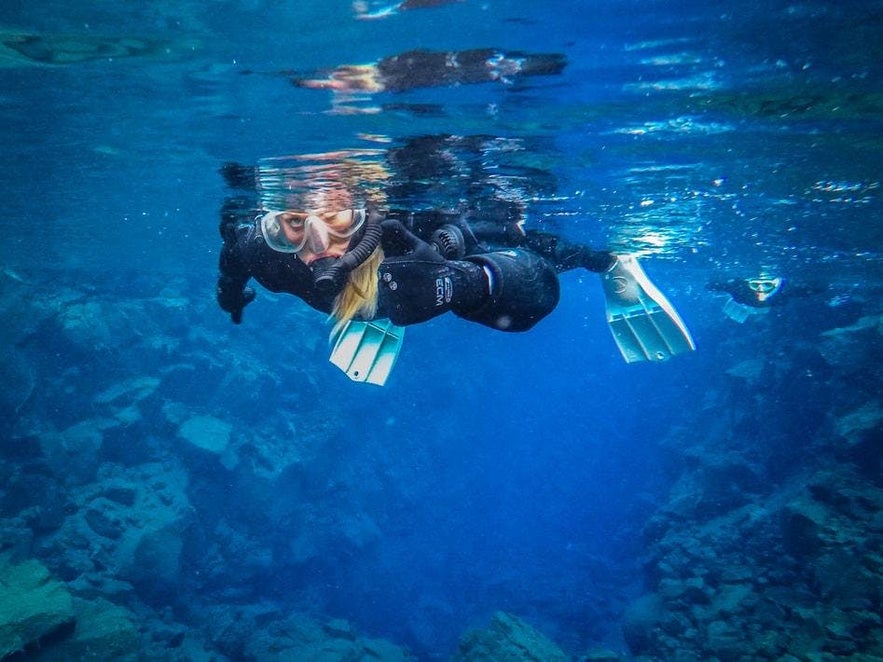
Although snorkeling and diving in Silfra in January is a reasonably safe activity, you must meet the following conditions to participate:
Drysuit Snorkel
-
Minimum age: 12
-
Maximum age: 60
-
Minimum height: 4 feet 7 inches (145 centimeters)
-
Minimum weight: 99 pounds (45 kilograms)
-
Experience needed: must be able to swim
Wetsuit Snorkel
-
Minimum age: 14
-
Maximum age: 60
-
Minimum height: 4 feet 9 inches (150 centimeters)
-
Minimum weight: 110 pounds (50 kilograms)
-
Experience required: must be able to swim
Drysuit Dive
-
Minimum age: 17
-
Maximum age: 60
-
Minimum height: 4 feet 9 inches (150 centimeters)
-
Minimum weight: 99 pounds (45 kilograms)
-
Experience needed: At least 10 logged drysuit dives OR be a certified dry suit diver
It's possible to take snorkeling or diving tours from Reykjavik. You can even combine snorkeling tours with other activities, such as this lava tunnel caving and Silfra snorkeling tour or this Golden Circle tour with snorkeling.
Top Snorkeling and Diving Tours
-
6-Hour Silfra Snorkeling Tour in Drysuit with Transfer from Reykjavik — Snorkel between two tectonic plates with a transfer from Reykjavik.
-
Silfra Snorkeling from Thingvellir National Park Meeting Point — Travel to Thingvellir National Park to embark on this unforgettable snorkeling tour.
-
Wetsuit Silfra Snorkeling with Underwater Photos & Transfer from Reykjavik — Discover the beauty of this UNESCO World Heritage site and experience its stunning views for yourself.
-
Diving Tour in Silfra With Drysuit and Hot Drinks — Dive into the crystal clear waters of the Silfra Fissure and enjoy hot drinks during the dive break.
-
PADI Dry Suit Diver Course with 1 Pool Session & 2 Open Water Dives from Reykjavik — Learn how to dive with the PADI Dry Suit Scuba Diver course, which includes one in-pool session and two underwater dives.
4. Go Glacier Hiking This January in Iceland

Most glaciers in Iceland are open for hiking throughout the year. This activity is excellent any time of year, but in January, the glaciers have an otherworldly beauty as they're clad in fresh, electric blue ice.
Solheimajokull is one of the most accessible glaciers to reach and hike in Iceland. It's 102 miles (65 kilometers) from Reykjavik, or just over a two-hour drive along the South Coast. If you don’t have a rental car, you can take this minibus tour with a glacier hike, which runs every day from Reykjavik!
Stunning Glacier Tours to Experience
-
The Skaftafell Glacier Hiking Tour — Those traveling further to Southeast Iceland can explore the Svinafellsjokull Glacier on this unforgettable tour.
-
Fantastic 2.5 Hour Easy Glacier Hike & Sightseeing Discovery Tour on Solheimajokull — This easy and accessible hike will take you to stunning crevasses, sinkholes, and other incredible formations.
-
Glacier Hiking on Vatnajokull with Transfer from Jokulsarlon Glacier Lagoon — Hike up the outlet glacier, Breidamerkurjokull, and experience all the sights it has to offer.
Before heading out, make sure you’re ready for icy conditions with layered, waterproof clothing and sturdy footwear. For tips on staying warm and safe, see our guides on what to wear for glacier hikes or ice caving, and check the ultimate guide to glacier tours in Iceland to plan your adventure.
3. Soak in a Hot Spring or Geothermal Pool in Iceland

One of the best things to do in Iceland in January is to slip into one of the many naturally heated geothermal pools. With dozens of hot springs and geothermal pools all around the country, you'll be able to find one to take a winter swim, no matter where you are.
Visiting a geothermal pool in January is a great experience, thanks to the colder temperatures. The embrace of the warm water is a wonderful contrast to the winter chill. Many pool complexes have indoor and outdoor pools, which are perfect for swimming and relaxing this time of year.
One of the highlights of a visit to Iceland is a trip to the famous Blue Lagoon, which is open year-round. It's located right between Reykjavik and Keflavik International Airport, meaning that it can be a great way to start your Iceland vacation! It's best to book your Blue Lagoon admission with very good notice, as it's often fully booked.
The beautiful Sky Lagoon is also great to visit because of its infinity pool overlooking the ocean and its closeness to Reykjavik. You'll also enjoy a 7-step spa ritual as part of your Sky Lagoon admission.
If you can’t choose between the Blue Lagoon and Sky Lagoon, a new and exciting option is Laugaras Lagoon, which opened in October 2025. This modern geothermal pool offers warm waters, stunning winter landscapes, and a relaxed yet lively atmosphere, all at a more affordable standard admission price.
Whether you choose a public pool or opt for hot spring tours instead, swimming in a geothermal pool in cold weather is one of the best things to do during an Icelandic winter.
2. Explore the Ice Caves of Iceland in January

January falls right in the middle of the ice-cave season, which runs from mid-October or November through March. The ice caves beneath the Vatnajokull Glacier have become one of Iceland's most captivating winter attractions. Because glaciers are constantly changing, guided ice cave tours are essential for safe exploration.
One of the best options is this Crystal Blue Ice Cave tour, where you’ll step inside a breathtaking natural formation with vivid blue walls and striking ice patterns. The crystal-blue walls and incredible shapes create a remarkable scene that makes this excursion unforgettable.
Your journey begins at Jokulsarlon Glacier Lagoon, one of Iceland’s must-see spots, followed by a thrilling monster truck ride across the glacier. From there, your guide will lead you into the season’s most spectacular Crystal Ice Cave for a memorable journey.
The caves transform every year as the glacier moves, ensuring that no two visits are ever the same. For a more in-depth experience, consider two-day or three-day packages departing from Reykjavik, giving you time to enjoy the ice caves, nearby attractions, and the South Coast.
Ice caving is truly one of the best things to see and do in Iceland during winter. For more inspiration on exploring the glaciers and the South Coast, check out our ultimate guide to ice caves in Iceland.
The Best Ice Cave Tours
-
The Katla Ice Cave Tour — Starting in the charming village of Vik, you'll make your way toward the stunning Katla Ice Cave. On the drive there, you'll experience beautiful Icelandic landscapes.
-
Into the Glacier Ice Cave Tour with Hraunfossar Waterfalls & Transfer from Reykjavik — Journey into the depths of a glacier and discover the breathtaking views that await inside.
-
The Skaftafell Ice Cave Tour & Glacier Hike — Discover the boundless beauty of Vatnajokull, Europe's largest glacier, on this hiking and ice-caving tour.
1. See the Northern Lights in Iceland in January

Can you see the northern lights in Iceland in January? Yes!
Visitors in January have an excellent chance of seeing these elusive lights. With fewer sunlight hours, there's a greater chance of spotting them.
The sunrise and sunset times during January are as follows:
January 1
-
Sunrise: 11:19 AM
-
Sunset: 3:44 PM
-
Hours of daylight: 4 hours and 24 minutes
January 31
-
Sunrise: 10:10 AM
-
Sunset: 17:10 PM
-
Hours of daylight: 7 hours and 2 minutes
You can often see the aurora borealis in Reykjavik. However, the less surrounded by light pollution, the better your view will be.
There are numerous great northern lights hotels further away from the capital that offer better viewing. A visit to Thingvellir National Park or the Hvalfjordur Fjord, both a 40-minute drive from Reykjavik, can greatly improve your chances of viewing the northern lights at their brightest.
Top Northern Lights Tours
-
Northern Lights Bus Tour from Reykjavik — Reach fantastic northern lights viewing areas with this bus tour.
-
Super Jeep Northern Lights Tour with a Professional Photographer — Venture into the Icelandic countryside and access places other vehicles can't reach easily.
-
Northern Lights Boat Cruise — Witness the beauty of the auroras and their reflections in the water with this unique viewing opportunity.
You can also pick up a Reykjavik rental car and hunt for the northern lights yourself out in nature. However, make sure the aurora forecast is rated above three and check the cloud cover to find the places with the clearest skies.
At this time of year, we recommend renting four-wheel-drive vehicles, like jeeps or SUVs. All rental cars should be equipped with winter tires to ensure maximum traction on snowy roads.
Driving in Iceland in January can be challenging and should only be done by confident drivers experienced on icy country roads.
Reykjavik in January
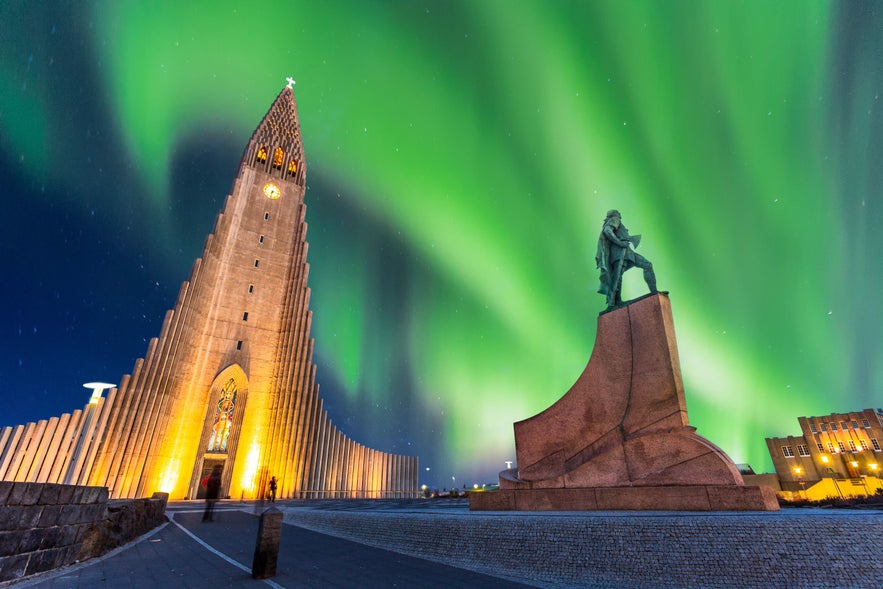 Even with winter’s short days, there are still plenty of things to do in Reykjavik in January:
Even with winter’s short days, there are still plenty of things to do in Reykjavik in January:
-
Cultural attractions: Consider visiting the city’s best museums or art galleries as they offer rich insights into Icelandic history and contemporary art. For families, the Perlan Museum features interesting interactive exhibitions on glaciers, volcanoes, and the northern lights.
-
Cozy experiences: Reykjavik’s best cafes, restaurants, and day spas provide warm, relaxed spaces for unwinding after a day of sightseeing.
-
Nightlife: Reykjavik’s nightlife scene stays active in winter, with many of the city’s top bars, clubs, and live music venues offering a lively yet welcoming atmosphere that lasts well into the night.
-
Outdoor options: Bundle up for short walking tours, explore the harbor, or experience some of the best winter activities in and around Reykjavik.
The weather in Reykjavik in January is cold and variable, with average temperatures ranging from 23°F to 34°F (-5°C to 1°C) and occasional dips during cold snaps.
Snowfall is possible, but rain and sleet are also common, so be sure to have a backup plan in place for rainy days.
By planning a mix of indoor and outdoor activities, you can make the most of Reykjavik in January, regardless of the weather.
What to See in Iceland in January
Since January is the height of winter, many parts of Iceland are not accessible. The roads into the Highlands, for example, are entirely blocked with snow, many parts of the Westfjords cannot be reached, and it can be tough to navigate the Eastfjords.
However, the most popular destinations, such as the Golden Circle, South Coast, and Snaefellsnes Peninsula, are among the best day trips from Reykjavik and are particularly beautiful under a blanket of winter snow. Just be mindful of the Icelandic weather forecast during your trip!
Some of the top things to do in Iceland in January are popular sights year-round. Regardless, they can become even more spectacular in winter.
Visit the Golden Circle in Iceland in January
Of all the attractions in Iceland, those on the Golden Circle route are the most popular. This doesn’t come as a surprise, as any in-depth guide to Iceland’s Golden Circle will highlight why it’s one of the country’s most iconic sightseeing routes.
Thingvellir National Park is usually first visited from Reykjavik. It's where you can see the divide between the North American and Eurasian tectonic plates, known as the Almannagja Gorge.
It was here that, in 930 AD, the early settlers of Iceland formed what would later become the longest-running, working parliament in the world. It was also where Iceland's Declaration of Independence was ceremoniously signed on June 17th, 1944.
The Geysir Geothermal Area in Haukadalur Valley is the second stop on your drive around the Golden Circle. Steaming fumaroles and streams break up the snowy earth, and the soil bears unusual and vivid colors. It's where the Strokkur Geyser erupts every five to ten minutes, giving you plenty of exciting photo opportunities.
Finally, you'll get the chance to see the Gullfoss Waterfall, one of the must-see frozen waterfalls in Iceland in winter. In January, the rocks surrounding it are caked in ice, making it even more mesmerizing to look upon.
Top Golden Circle Tours
-
The Golden Circle Minibus Tour from Reykjavik — Discover Iceland's unique culture and dynamic landscapes on this unforgettable minibus tour.
-
Golden Circle & Kerid Crater Bus Tour from Reykjavik — Immerse yourself in the unique volcanic scenery on the land of ice and fire.
-
Golden Circle Afternoon Tour from Reykjavik — In a single afternoon, you'll experience stunning waterfalls, geothermal areas, and much more.
-
Golden Circle Tour from Reykjavik with Fridheimar Greenhouse — This exciting Golden Circle route will take you by the advanced Fridheimar greenhouse cultivation center.
-
Small-Group Golden Circle Minibus Tour from Reykjavik with Bruarfoss Waterfall & Kerid Crater — Venture out into Iceland's countryside and see its greatest sights on this full-day adventure.
Explore Iceland’s South Coast During January
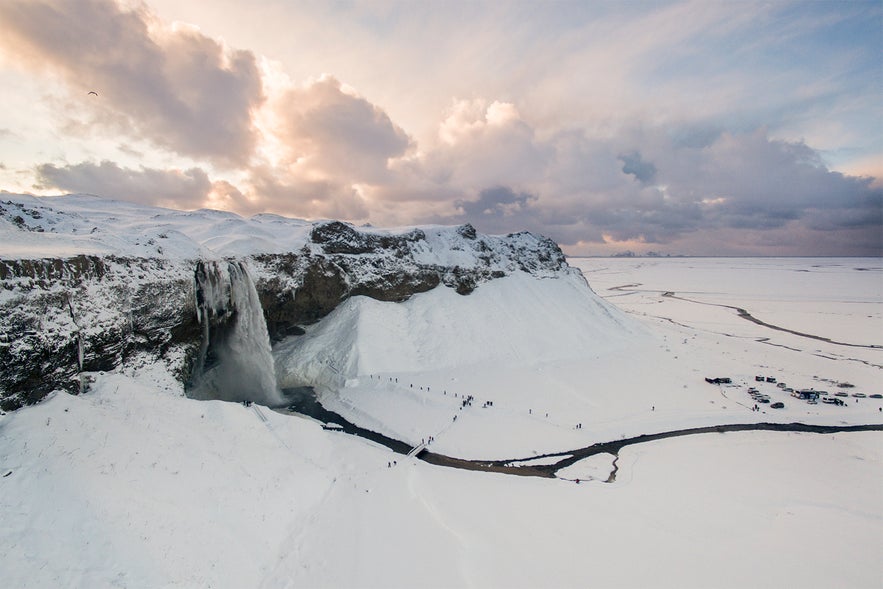
The South Coast is second to the Golden Circle in terms of iconic Iceland routes. The Ring Road, southeast of Reykjavik towards the town of Vik and even further to Hofn, has many incredible sights and is worth visiting.
You'll first see two waterfalls, Seljalandsfoss and Skogafoss. The former tumbles off a concave cliff, making a very unusual sight, whereas the latter is much wider and more powerful.
Continuing along the route, you'll come across many glaciers, such as Solheimajokull, Myrdalsjokull (which covers the Katla Volcano) and the notorious Eyjafjallajokull Volcano, before reaching Vik. The beautiful coastal scenery around Vik includes the Dyrholaey Peninsula, Reynisfjara Black Sand Beach, and the Reynisdrangar Sea-Stacks.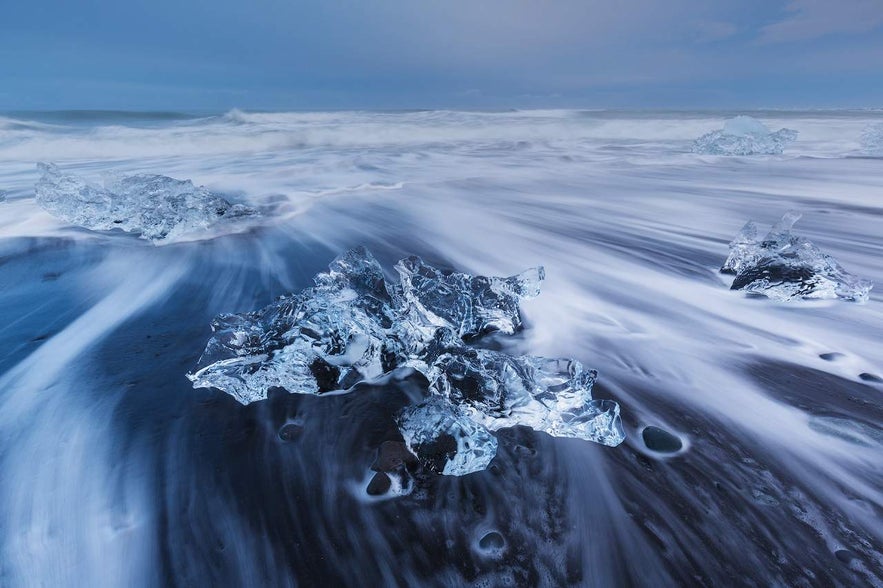
The waves are unpredictable and dangerous in this region, so be cautious. After enjoying this area, you'll travel through the vast lava fields of Eldhraun until you reach the Skaftafell Nature Reserve.
Skaftafell is a lovely region with lava fields and forests, glacier tongues and lagoons, rivers and waterfalls. It's especially popular with hikers, as its routes are accessible to all skill levels. One of the best routes will take you to Svartifoss Waterfall, renowned for the dark hexagonal basalt columns surrounding it.
The final site on the South Coast is Jokulsarlon, the famous glacier lagoon. Watching the icebergs cruise across the lake to the sea is mesmerizing. Some can even reach the size of multi-story buildings!When they reach the ocean, they wash up on the black-sand shore of Breidamerkursandur. It's nicknamed Diamond Beach because of the way the ice glitters on the black sand.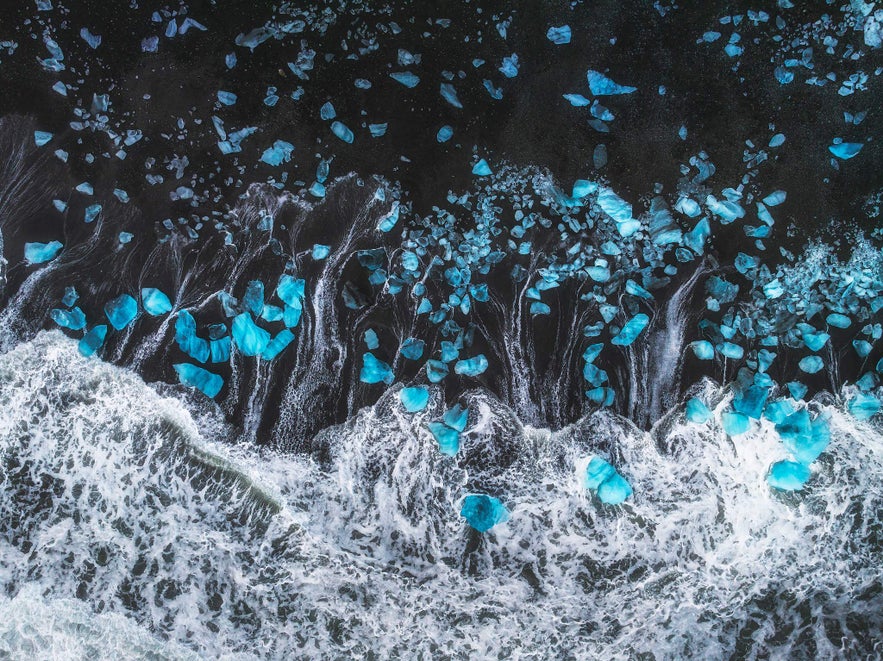
There are many South Coast tours to choose from, or you can do exciting self-driving activities such as glacier hiking, ice caving, or snowmobiling!
If you're planning to explore the region more deeply, a detailed South Coast guide can help you map out the best stops and hidden highlights along the way. It’s also helpful to look into the best restaurants on the South Coast so you’ll know where to stop for a warm meal between adventures.
Top South Coast Tours
-
The South Coast of Iceland Tour from Reykjavik — Discover breathtaking glaciers, incredible volcanoes, captivating waterfalls, and more along the South Coast.
-
South Coast Tour from Reykjavik to Solheimajokull Glacier — Journey into Iceland's remarkable South Coast and explore the mighty glacier, Solheimajokull.
-
The Glacier Lagoon & South Coast Day Tour from Reykjavik — Experience the South Coast's most iconic and beloved sights on this memorable day tour.
Discover North Iceland in the Winter Season
North Iceland is an incredible place and is accessible through the winter season, as long as you're ready to tackle heavy snow. It's possible to drive there or take a flight to Akureyri from Reykjavik Domestic Airport if the weather permits. After the journey, a stop at some of the best restaurants in North Iceland makes a tasty reward!
Covered in a blanket of snow and lit with festive lights, Akureyri is an incredibly charming town. It has many boutiques, restaurants, and bars and is surprisingly lively throughout the year. The town arguably contains the best ski slopes in Iceland, and you can also embark on many tours from Akureyri for an exciting adventure.

Beyond its ski slopes, some of the best things to do in Akureyri include exploring the scenic fjords and mountains that surround the town. By driving a short distance outside Akureyri, you'll be able to see incredible waterfalls, such as Godafoss, and Dettifoss, if the road conditions permit.
North Iceland's most popular destination throughout the year is Lake Myvatn. This diverse region is renowned for its wide array of sites. Here, you'll discover the lava fortress Dimmuborgir, the Namafjall Geothermal Area, the Viti Crater, and the Skutustadagigar Pseudo-Craters.
The area around Lake Myvatn features several Game of Thrones filming locations in Iceland, making it the perfect destination for fans who wish to walk in the footsteps of Jon Snow and Daenerys Targaryen. You can even have the ultimate immersive experience with Game of Thrones tours, which will bring you to the world of Westeros.
If you want to explore everything this region has to offer, our complete guide to Lake Myvatn is a great place to start.
Top North Iceland Activities
-
Lake Myvatn Sightseeing & Hot Springs Tour from Akureyri — Experience the captivating and unique landscapes of North Iceland. You'll discover craters, waterfalls, and many other unforgettable sights.
-
Dog Sledding Tour in Myvatn in North Iceland — Travel with Siberian Huskies across the countryside and explore the diverse landscapes Lake Myvatn has to offer.
-
The Earth Lagoon Admission Ticket — Relax from long hikes and excursions by soaking in the rejuvenating Earth Lagoon, formerly known as Myvatn Nature Baths.
-
Forest Lagoon Admission Ticket in North Iceland — Soothe yourself in the geothermal waters of the Forest Lagoon and admire the area's lush greenery.
See the Snaefellsnes Peninsula Covered in January Snow
The Snaefellsnes Peninsula has gained the nickname "Iceland in Miniature" since its 56-mile (90-kilometer) coastline has many diverse landscapes and features representative of the country.
Nowadays, the best-known attraction in the Snaefellsnes Peninsula is Mount Kirkjufell. This arrowhead-shaped mountain is just a 1.5-mile (2.5-kilometer) drive from the village of Grundarfjordur and was featured in Game of Thrones.
The second best-known attraction is the Snaefellsjokull Glacier, made famous in Jules Verne's classic science fiction novel, "Journey to the Center of the Earth."
These are just a few of the top things to see and do on the Snaefellsnes Peninsula in January!
You can encircle it and view the seal colony at Ytri Tunga and the coastal fishing villages of Arnarstapi, Hellnar, and Stykkisholmur. Along the way, you will find natural wonders such as Djupalonssandur Beach, the Budahraun Lava Fields, and the Londrangar Basalt Towers.
While the region offers opportunities for fantastic winter self-drive tours, there are also a variety of Snaefellsnes tours from Reykjavik. It can be visited as a day trip, but we highly recommend taking at least two days to fully immerse yourself in the region. You can conveniently stay a night in a Snaefellsnes accommodation.
The Best Snaefellsnes Tours
-
The Snaefellsnes Peninsula Tour from Reykjavik — Discover the marvels of the Snaefellsnes Peninsula and learn firsthand why it's called “Iceland in Miniature.”
-
Small Group Tour of Snaefellsnes Peninsula with Transfer from Reykjavik — On this group tour, you'll get to see the Snaefellsnes Peninsula, volcanic beaches, and other unforgettable sights.
-
8-Day Guided Tour of the Complete Ring Road of Iceland With Top Activities — Embark on a guided tour of Iceland's iconic Ring Road without the hassle of planning.
January Festivals and Events in Iceland
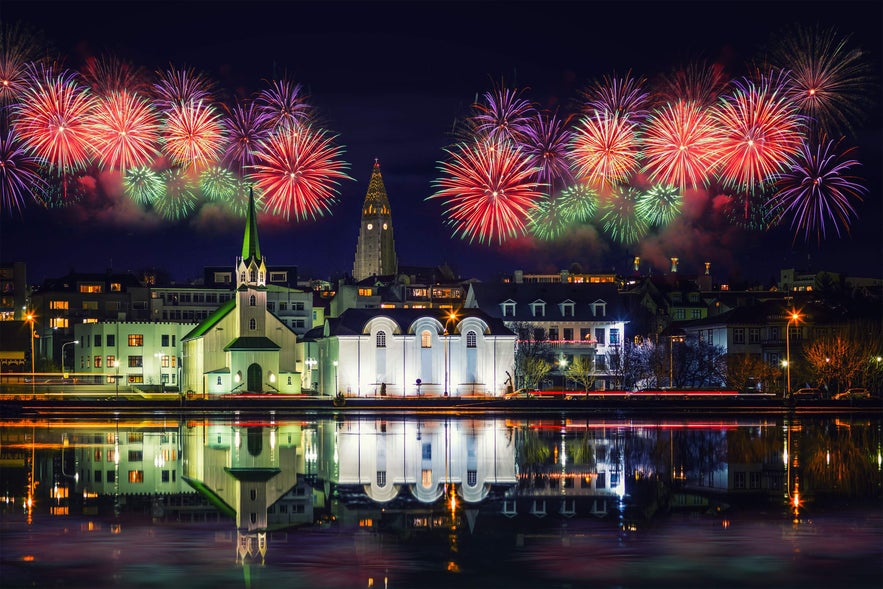 Festivals occur throughout the year across Iceland. While the summer months are generally much busier, there are still exciting cultural events throughout January that draw many visitors. This makes it a great time to experience some of the top festivals in Iceland.
Festivals occur throughout the year across Iceland. While the summer months are generally much busier, there are still exciting cultural events throughout January that draw many visitors. This makes it a great time to experience some of the top festivals in Iceland.
New Year's Eve in Iceland
New Year's Eve celebrations start on December 31st. In the evening, locals come together around numerous bonfires in the Capital Region, known as "brenna," which symbolizes the burning away of the old year's troubles.
Every December, Icelanders buy thousands of fireworks, and at midnight, the sky lights up with a colorful display that lasts throughout the night all over the city.
Vantage points like the churches of Hallgrimskirkja and Kopavogskirkja allow you to see the fireworks going off all over the surrounding area. You'll struggle to find a more exciting New Year's Eve than in Reykjavik, and it's certainly one of the most fun party nights of the year!
The Thirteenth of Christmas

The Icelandic Christmas season ends on January 6th, which is "the thirteenth day of Christmas" or "Threttandinn" in Icelandic. There's a lot of folklore that surrounds this day, as cows are said to gain the ability to talk, the hidden people (huldufolk) move homes, and the last of the 13 Icelandic Yule Lads returns to their home in the mountains.
The day is celebrated with bonfires in several locations around Reykjavik and the countryside. There's no shortage of fun cultural events and celebrations to enjoy!
Dark Music Days
For music lovers, the Dark Music Days festival takes place in early January and is hosted at Harpa Concert Hall and various other locations by the Icelandic Composers' Society.
The festival brings national and international talent, showcasing innovative contemporary music and new Icelandic compositions. Established in 1980, the festival has premiered more new works of music than any other Icelandic cultural event.
The Reykjavik International Games

Every year in late January, the Reykjavik International Games take place in the stadium of Laugardalur Valley. Competitions take place in 20 different disciplines, ranging from karate, athletics, climbing, swimming, and CrossFit. In recent years, some e-sports have even been included in the program.
World records have been set at this competition, and many national records are regularly set for Icelandic sports. The games take place across two weekends, and there's a wide range of different sports and games for everyone to enjoy.
Thorrablot
Thorrablot is a cultural event that happens in the lunar month of "Thorri," in the old Icelandic calendar. The first day of Thorri is Bondadagur (Man's Day), when people honor the men in their lives. Thorri starts in January and ends in mid-February with Konudagur (Woman's Day), when people celebrate the women of Iceland.
During this festival, Icelanders honor their history by dining on various foods that have been eaten in Iceland through the centuries.
Iceland has mostly been a poor country throughout its history, and surviving the long, dark winters was very hard. Over the centuries, Icelanders developed a unique Icelandic food culture, finding ways to make food last during the winter when nothing could grow and ensuring that every part of the animals was used.
As a result, many dishes eaten during Thorri, often listed among the more disgusting foods in Iceland, were necessary for the country's survival for over 1,000 years. Some of these foods include "svid" (boiled sheep's head), "hakarl" (fermented shark) or "hrutspungar" (ram's testicles).
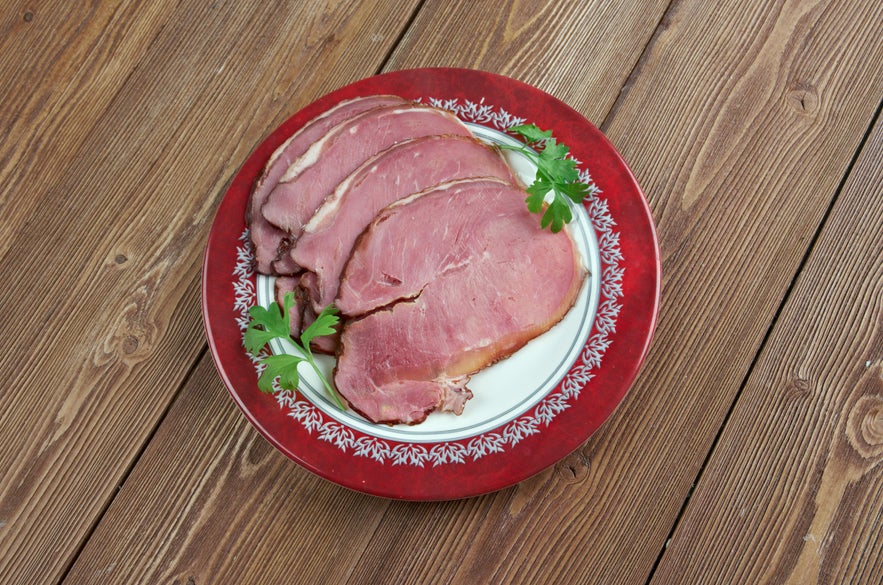 The dishes are usually served with "brennivin," Iceland's signature distilled beverage, sometimes called Black Death in English. After the feast, locals party all night long, telling stories and singing. Being invited to one of these feasts is a real honor!
The dishes are usually served with "brennivin," Iceland's signature distilled beverage, sometimes called Black Death in English. After the feast, locals party all night long, telling stories and singing. Being invited to one of these feasts is a real honor!
There are plenty of Icelandic meals to enjoy, including tasty smoked lamb known as "hangikjot" or highly nutritious stockfish "hardfiskur." During the months of January and February, many of these local dishes are sold in supermarkets.
Additionally, you can experience Icelandic cuisine during food and drink tours, like this traditional Icelandic food tour in Reykjavik or this small-group food walking tour.
The Weather in Iceland in January
 Visiting Iceland in January comes with unique winter challenges and unforgettable scenery. Many travelers are concerned about the weather this time of year, as January is one of the coldest months in Iceland.
Visiting Iceland in January comes with unique winter challenges and unforgettable scenery. Many travelers are concerned about the weather this time of year, as January is one of the coldest months in Iceland.
The average temperature across the country is around 31°F (-1°C), but it varies depending on the region. Southern areas tend to be slightly warmer, while northern regions and the highlands can experience colder temperatures.
January is also a reasonably wet month, with an average of 3.5 inches (88 millimeters) of precipitation. You may experience a mix of rain, snow, hail, wind, and occasional sunshine during your trip.
Storms are not uncommon, and they can bring strong winds that make outdoor activities challenging, especially if you are on a winter self-drive tour. It’s important to monitor local forecasts, check road conditions, and heed any weather warnings.
Because the weather in Iceland can be unpredictable, it’s wise to build flexibility into your itinerary, no matter your ideal length of a trip to Iceland.
Planning around the best Iceland winter itineraries can help you balance iconic attractions with indoor and outdoor activities.
What to Pack for Iceland in January

January in Iceland promises enchanting snowy landscapes, shimmering northern lights, and chilly temperatures. To fully enjoy this winter wonderland, thoughtful packing is essential.
-
Layered clothing: Start with thermal base layers. Opt for moisture-wicking and insulating materials like merino wool or synthetic blends. Over that, add a mid-layer like a fleece or down-filled vest. This will allow you to easily remove or add on clothing if you're too warm or cold.
-
Waterproof and insulated outerwear: A waterproof and windproof jacket is crucial, ideally with insulation. Your pants should also be water-resistant, especially if you plan to hike or spend a lot of time outdoors.
-
Footwear: Insulated, waterproof boots with a sturdy grip are a must. Iceland's terrain can be slippery and wet, especially with ice and snow. Bring crampons if possible, as the streets can be very slippery when covered in ice.
-
Accessories: Woolen or thermal socks, a warm hat covering your ears, and a scarf or buff will protect against biting winds. Bring warm, waterproof gloves to keep your hands safe from the cold. If you plan to go northern lights hunting, you can bring additional touch-sensitive gloves so you can take photos and adjust any camera settings without removing them.
-
Swimwear: Don't forget swimwear! Even in January, you might want to relax in one of Iceland's geothermal pools or the famous Blue Lagoon.
-
Backpack: A waterproof backpack will help keep your gear dry during excursions.
-
Thermos: There are a few things as cozy as enjoying a cup of hot chocolate or coffee when outside in the snow, so bring a thermos to make the most of any outside exploration.
-
Sunglasses: If you plan to drive, consider bringing sunglasses to shield your eyes from the glare of snow and ice.
-
Skincare: The cold can be really harsh on your skin, so bring good hand cream, lip balm, and moisturizer.
Lastly, always check the weather forecast and adjust your clothing accordingly. The harshness of winter varies from year to year, and Iceland's weather can be rather unpredictable. Being prepared ensures your adventure is comfortable, memorable, and safe!
- See more about What To Pack for Iceland for All Seasons
Driving in Iceland in January
If you want to rent a car in Iceland in January, we recommend you only do so if it's a four-wheel drive and you have a lot of experience driving on icy roads. Winter tires are mandatory in Iceland between November and April, so your rental car will have proper tires. When you pick up your rental car, double-check the tires to be sure.
Choosing the right rental car size and reviewing our tips for renting cars in Iceland can make your winter driving safer and more comfortable.
It's also wise to read up on driving in Iceland, as some rules, conditions, and terrain may differ from what you're used to. Before every journey, make sure to check road conditions.
However, it's not just the weather you need to worry about. Roads can also be closed by avalanches and heavy snow.
If a particular road is marked as closed, it's not possible to drive it. Do not attempt to drive on closed roads, as you'll be putting both yourself and those who will need to come to help you at risk. You might also face fines and high towing fees, which are not covered by insurance.
Suggested Itinerary for Visiting Iceland in January
There are many things to do in Iceland in January, and you can tailor any itinerary to suit your group's needs, budgets, desires, and time constraints. Below are some general itineraries you should consider.
Most people visiting Iceland in January will feel more comfortable taking guided tours than driving themselves. That way, there's no stress associated with navigating the dark, icy roads in inclement weather. One way to eliminate all stress is to book a vacation package that includes all accommodations, transfers, and tours.
To finish your trip, you can find many exciting winter activities and landscapes on your journey around Iceland in January despite the chilly weather. There are many opportunities to see the northern lights and experience other winter-only activities.
With few other travelers at the best and most popular sites, a January holiday in Iceland should be an immersive, authentic journey you'll remember for years!
How Iceland in January Is Different From Other Months
Traveling to Iceland in January means shorter days and colder conditions. As a result, roads outside Reykjavik may be icy or closed, making some areas accessible only by guided tour or certain vehicles.
Unlike summer months, some highland areas and hiking trails may be inaccessible due to snow cover. However, the long nights offer ideal conditions for spotting the northern lights.
Visiting Iceland in January gives you a quieter experience, with fewer tourists at popular sites like Gullfoss Waterfall and Thingvellir National Park. Many attractions stay open year-round, but the atmosphere is more serene and intimate in the winter months, typically December through February, and sometimes into March.
January in Iceland offers a completely different mood from the vibrant colors and midnight sun. Winter in Iceland brings a serene, snowy atmosphere, which contrasts beautifully with the long days and lively activity of the Icelandic summer.
Are you hoping to visit Iceland in January 2026? Have you visited Iceland in winter before? Share your thoughts in the comments below!


